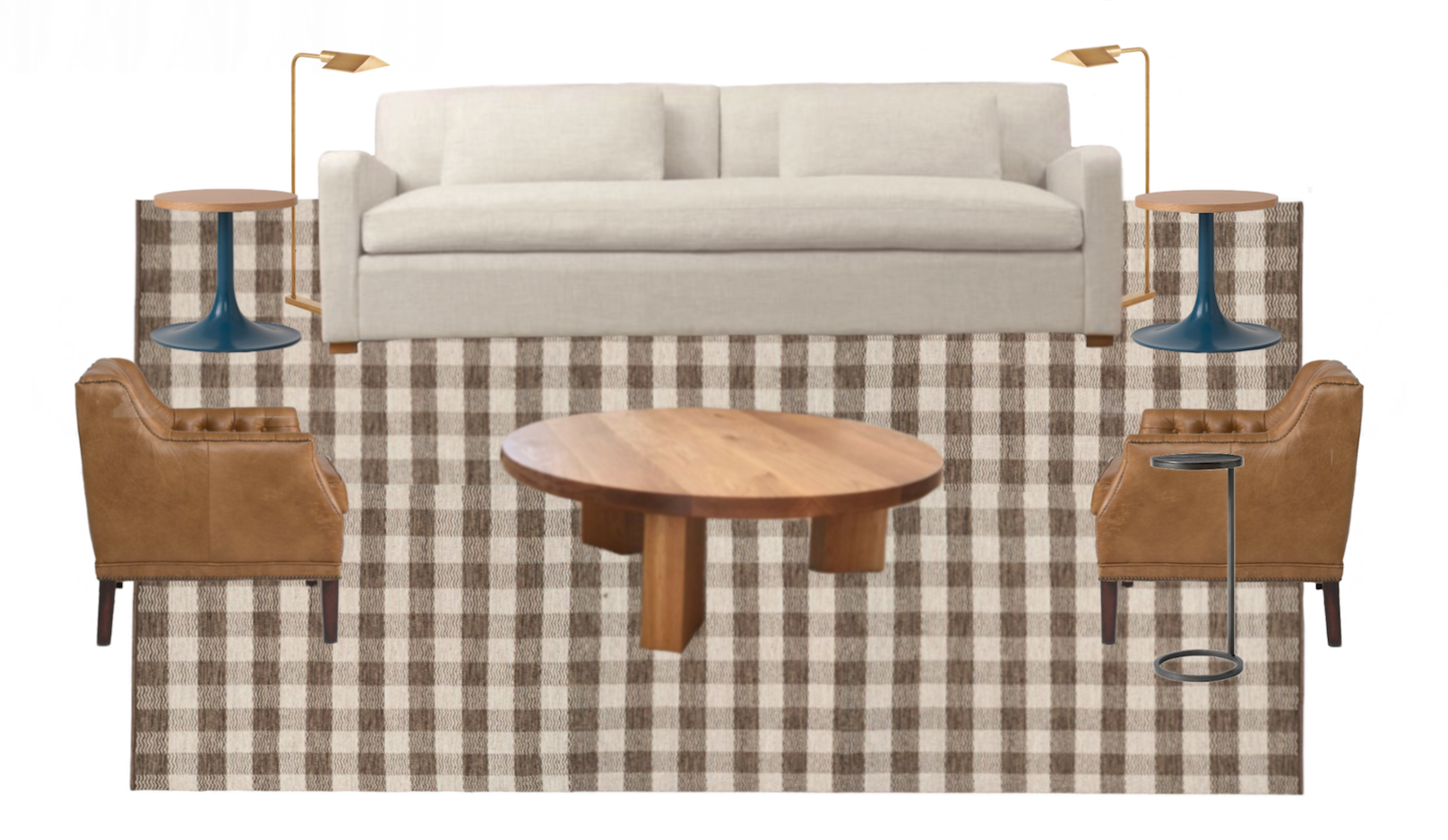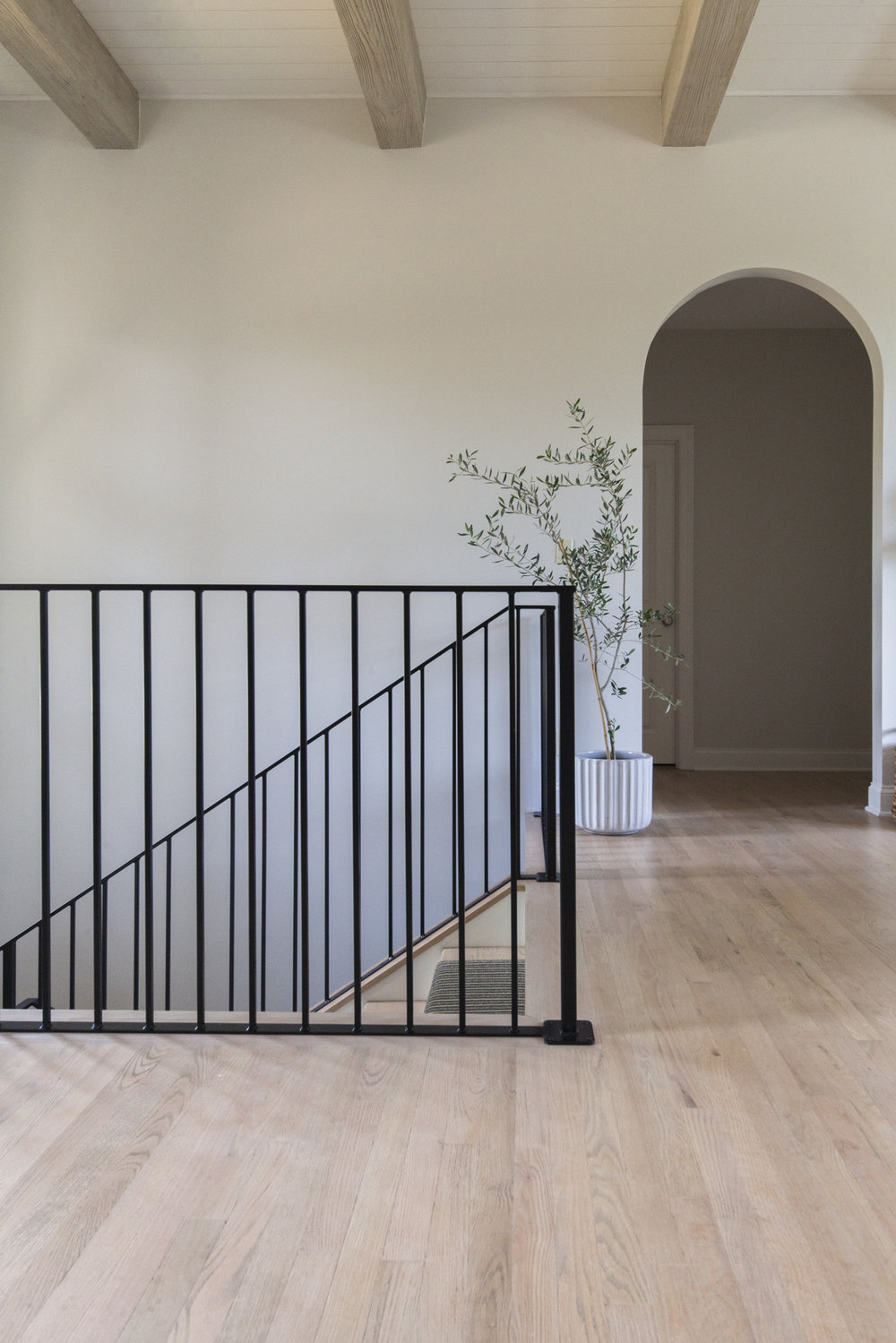Maybe it’s these icy cold December days that have me mesmerized by the warmth of ochre, but regardless of the season, I can’t seem to shake this color. It’s bold and vibrant, but pairs perfectly with neutrals so it doesn’t feel too overwhelming. I love the idea of bringing ochre into a muted room through textiles or upholstery for a toned-down approach. If you’re looking to make a bigger impact, try painting a feature wall or your cabinetry - Farrow and Ball India Yellow is a favorite!
monday mood board // holiday edition
I’ve been feeling a bit grinchy this year when it comes to holiday decor. While I don’t think I’ve ever been anything other than a holiday minimalist, I seem to be craving even less “stuff” this time around. In my opinion, you should never have to sacrifice style and space when it comes to being festive. Here’s a glimpse at what’s inspiring me this holiday season - simple, neutral and earthy decor. Still quite beautiful I’d say.
cabin design inspiration
It’s a fact, I have a hard time parting with meaningful things. When it came down to cleaning out the house where my Oma lived so she could move to a senior community, it took a lot of self control to not fill our 600 square foot apartment with all of her belongings.
One thing I did allow myself to take was her collection of vintage handkerchiefs (and quite a few other things, don’t worry!) I’ve had them folded up in a pretty brass bowl, and every once in a while I like to take a gander through them. In my recent perusing, a collection of earthy plaids jumped out at me among the frills, lace and pretty pink flowers. Perhaps the cooler weather and the changing seasons has something to do with finally noticing those in the mix. It got me thinking: how fun could these patterns be when layered over one another in a cozy cabin in the woods? While I don’t have that cozy cabin of my dreams at the moment, there’s no harm in planning for it one day, right?
So let’s talk about how we can get from point A - handkerchiefs, to point B - a room design inspiration board.
STEP 1 -
Define the colors. There are no set rules here, but I find it easiest to pick out a palette that includes about four or five colors - pulling from your inspiration source. Use these colors as a guide when sourcing your furniture and textiles.
STEP 2 -
Come up with a general theme. Do you want a room full of paisley or floral patterns? Maybe you’re into bold geometric schemes? Try to stay focused on a general concept. In this case, using our inspiration handkerchiefs, our obvious theme was PLAID. Taking cues from our inspiration image, having different sizes and styles/patterns of plaid is what keeps things interesting but still cohesive. Some patterns are more intricate, some are simple, some are larger scale. When you are designing a room, having a mix is ideal. Just make sure there is a common theme throughout all of your patterns. You can always reference your color guide to keep you in check.
STEP 3 -
Pick out your rug. I find it easiest to work from the ground up. I always consider the rug one of most important design elements of the space. Once you have this selected, it’s easier to layer in other colors and patterns that coordinate. For this space, I went with a neutral gingham-like rug that undoubtedly draws from our inspiration scheme and offers a cabin-like feel.
STEP 4 -
Add in furniture. In my opinion you can’t go wrong with a neutral sofa. This gives the room an opportunity to feel a little more toned down and allows the patterned rug and accessories to really shine. I’ve also added in leather chairs with tufting and a wood coffee table for texture and warmth. For a bit of nostalgia, I added in some vintage-inspired end tables with a pop of color. While the furniture doesn’t necessarily have any “pattern”, the pieces still stick to our defined color palette. Lastly, mixed metal accents like floor lamps and a drink table add interest and function to the space.
STEP 5 -
Layer in pillows and other textiles. Here’s where I take the opportunity to further develop our general pattern and color scheme. The pillow patterns tie in with the general concept, they are unique enough so they don’t compete with each other, and larger in scale so they don’t fight with the rug. And of course, a soft textured throw that ties in is a necessity!
STEP 6 -
Pull it all together by finishing the room with art and accessories. Use the color palette as a guide but have fun with it. Add in a large statement piece or group smaller items together for a collected look. Here I chose several pieces that fit into the general “cabin” theme while also complimenting the colors in the room. And finally, don’t forget to style the space with candles for that extra cozy factor and a plant to help bring the feeling of the outdoors inside.
So there you have it, a cabin living room design inspired by Oma’s handkerchiefs. I think she’d love to hang out there with me!
Sources:
Rug from Rugs Direct // Sofa from Restoration Hardware // Coffee Table from Etsy // Lounge Chairs from Schoolhouse Electric // End Tables from Schoolhouse Electric // Floor Lamps from Circa Lighting // Accent Table from Pottery Barn // Throw from Rejuvenation // Art (lower left) from Etsy // Art (upper left) from Etsy // Art (center) from Etsy // Art (right) from Etsy // Pillows (blue plaid) from Etsy // Pillow (sand plaid) from Etsy //
thanksgiving table inspiration // a local roundup
Thanksgiving is just a couple of weeks away. What better way to give thanks than to support your local community when pulling together your Thanksgiving tablescape. Here’s some inspiration from a few of my favorite artists and shops in Somerville and Cambridge. When decorating for Thanksgiving, I like to stick with neutral colors and textures that feel reminiscent of the fall season and don’t compete with the food. Because we all know that’s what we’re focused on. Enjoy!
white oak flooring
WHITE OAK // It seems to be a big buzz word in the interior design world these days, and there’s a reason for it. It checks the boxes on what we love most about incorporating wood in our homes - organic texture and warmth, but it does so in a way that feels much more subtle, clean and contemporary than its darker and heavier wood counterparts. Specifically when it comes to wood floors, choosing a light wood can have such a big impact. Don’t these spaces feel like a breath of fresh air?
Thin wood planks add texture and interest. Photo Source
A clean and contemporary look with wide plank flooring. Photo Source
Herringbone floors add timeless elegance. Photo Source
Light wood floors paired with light wood ceilings. Notice how this doesn’t feel heavy despite all of the wood in the room. Photo Source
I had the opportunity to test out a few different floor stains for our Cambridge project. As it turns out, achieving that soft and muted look vs. that dark orangey-brown wood tone we’re all so familiar with is actually quite simple.
Here’s the scoop, it’s all about water-based floor stain vs. oil-based floor stain. Using a water-based stain will result in minimal color change from the tone of the natural wood while still protecting the floors and preventing wear and tear. An oil-based stain is what brings out those rich warm tones in wood. While this can certainly be beautiful, you’ll want to stay clear of floor stain with oil if the natural and muted look is what you’re going for.
After testing several floor stains (all oil-based except for the water-based poly) on unfinished white oak samples, we knew that using a water-based product was the direction we wanted to go.
As a final step, we had a large section of the wood floors in the home sanded down so we could give the actual floors an official test. Although the water-based stain we tested beforehand was Varathane brand, we ended up using a highly recommended product - Bona Waterborne NaturalSeal. The Bona natural finish shown in the sample above is actually oil-based, so don’t let that confuse you! And lastly, we added a couple coats of Bona Traffic Naturale, a very matte top coat to help with protection. The results are quite beautiful and such a difference from the current floors. Now we patiently wait for the rest of the construction to finish up so the floors can be refinished throughout the home. We’ll also be putting in new white oak kitchen cabinets, hence the samples I have on top of the refinished floors. More updates to come, so stay tuned!

















